
SHAH GHARIB ALLAH OF CHITTAGONG -ABDUL KARIM
 Sufinama Archive
April 24, 2020
Sufinama Archive
April 24, 2020
At a little distance to the north of Chittagong town there is, on a hill top, a grave enclosed in mud walls and roofed over by C. I. sheets The grave is an object of veneration and local people visit the place in large numbers, particularly on the days of Muslim festivals. According to tradition the saint Shah Gharib Allah (or Gharib Allah Shah) is lying buried there. No one can tell for certain the exact time when the saint flourished, though he is classed amongst the early saints of the district.
For the last few years I have been searching the biographical literature for an account of the saint but in vain. Recently the Asiatic Society of Pakistan has procured a photostat copy of Malfuz-i-Rukni, a collection of discourses of Shaikh al-Islam Hazrat ‘Ain al-din ‘Abd al-Bari, better known as Rukn al-din Ahmad Shattari, son of Muin al-din, son of Qutb al-din Shattari, son of Shah ‘Ala’ al-din. The discourses were compiled by one of his disciples, Pir Imam al-din Shattari of Rajgir. The discourses compiled in this manuscript were delivered during the period from 1104-1117/A.D.1692-1705.The saint died in 1117/A.D.1705-06
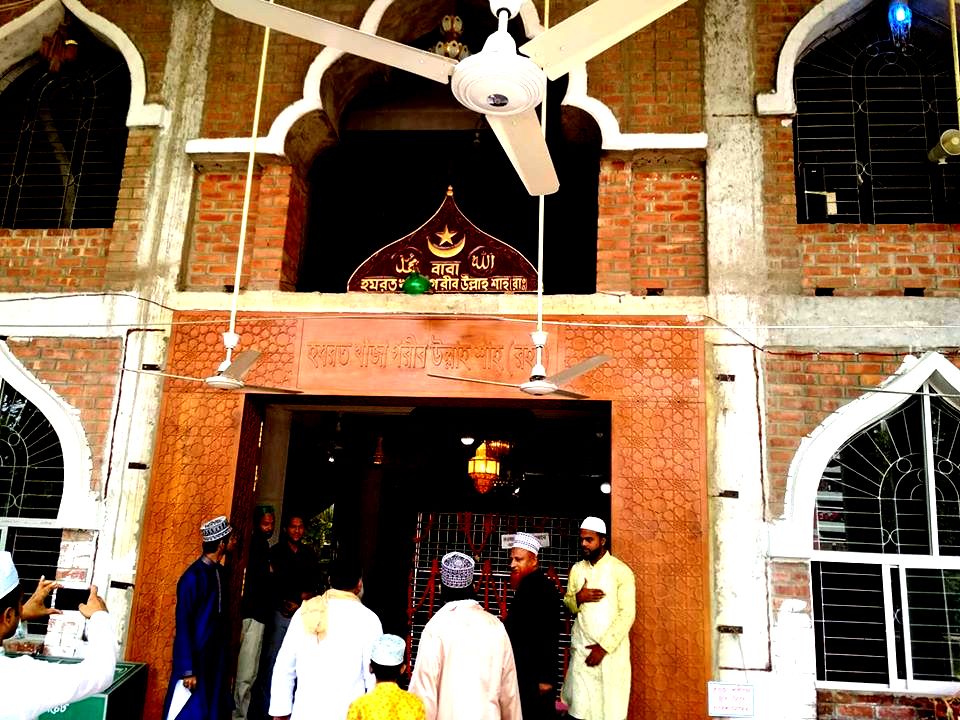
In one of his discourses the saint dwelt upon Shah Gharib Allah of Chittagong. The discourse is reproduced below :
“Eighteenth Majlis, dated 8th Zi’l-hijja, Wednesday, 1104/11th August 1693 the audience of the saint (Shaikh Rukn al-din) was obtained. Those present were discussing about Shah Gharib who was one of the disciples of His Majesty (the saint) and who lies buried at Chittagong on the bank of the river Phani (Feni). After that he (the saint Rukn al-din) himself said that he (Shah Gharib Allah) was the nabirah (grandson) of Quiij Khan. His name was Ruh Allah. In the beginning he was a servant of Prince Dara Shikoh. The reason of his renouncing the world and accepting an ascetic life was that when Prince Dara Shikoh was defeated he (Ruh Allah) and other servants came to Akbarabad ( Agra) and entered into the service of the Emperor Aurangzeb, They were attached to Bahadur Khan, the foster-brother of the emperor and went in pursuit of Dara Shikoh. When Dara Shikoh was imprisoned, he was put in charge of a Jamaitdar to whose party Ruh Allah belonged, They were to put Dara Shikoh on the saddle every day and bring him along to the court. From the day he was imprisoned, he used to take khichri cooked by his own hand. One day it so happened that the fire wood was wet and the khichri could not be cooked in time. The man (Jama‘itdar) got ready to put the prince on the saddle but he ( the prince ) was busy cooking the khichri. There was some delay and the man spoke words not worthy of princes. At last the prince rode without eating anything, Mian Ruh Allah stood behind him and heard the harsh words used by the fellow. It occurred to his mind that, God is great! the prince, in spite of his grandeur and dignity had reached such a stage in a few days that ordinary people could speak with such impertinence and he ( the prince ) remained the humblest of the humble. There upon Mian Rul Allah became extremely perplexed, his heart turned away from the world.
After some days the Jamaitdar was attacked with leprosy and died within a few days. Mian Ruh Allah left the company of soldiers and took the road to a village, reached Akbarabad (Agra) but he did not stay there. For some days he roamed here and there and reaching this place (Patna) he developed an attachment for the saint ( Shaikh Rukn al-din) till it reached the stage of his being a disciple, For some months he cleaned the latrine and nobody knew about it. He performed all services with devotion. At length devotional intoxication prevailed upon him and strange situation took place and he came out of the place (went away from this place) like a mad man.
He disappeared for some time. After six months he was seen coming from a distance but he could not be recognised. When he came near he began to prostrate himself. Friends said that he looked like Mian Ruh Allah. I (Rukn al-din) said, yes, he is Shaikh Ruh Allah, Friends ran and drew him aside. But he was in a strange condition: he was bare-headed and bare-footed, there was one paijama (trouser) but that too was so torn that it reached up to knee. When he came in front he prostrated and kissing the ground put three Bahlolis (coins of the time of Sultan Bahlul Lodi) before me (and said) “Sir, these three Bahlulis were left with me for expenses. I went away burying them under the tree and today I have got them.” Then he said “these were from you and have again come for your work.” After that it came out of the auspicious tongue (of the saint Rukn al-din) that after some days he went from here (Patna) to Banglah, but nothing was known about him. After his death news reached that there (at Chittagong) he was known as Shah Gharib. One of those present asked, “Was this title given by your august self ? ( The saint replied ) that he was known by that name, The people of Chittagong venerate his grave, and present sweetmeat and other articles (nudhur) .”
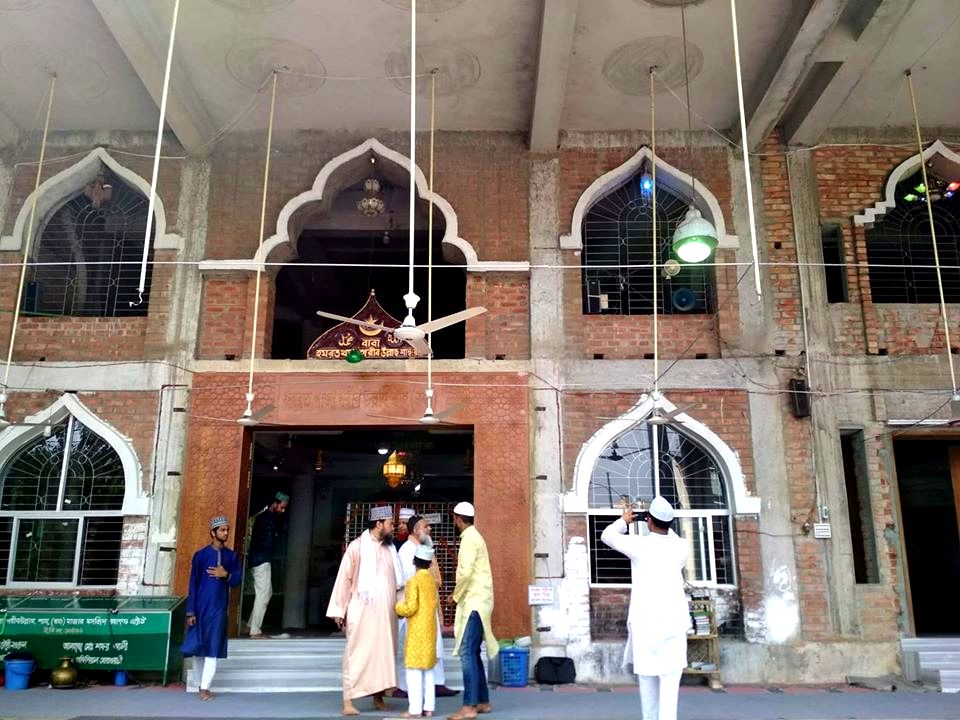
The Malfuz-i-Rukni refers to Dara Shikoh and Qulij Khan. After his defeat at Samugarh, when Dara Shikoh was being hotly pursued by Aurangzib’s generals, the prince after wandering through various places, went to Dadar, 9 miles to the east of the eastern end of the Bolan pass and took shelter with Malik Jiwan, a frontier Afghan chieftain. Once when Malik Jiwan was sentenced to death under order of the Emperor Shahjahan, the prince (Dara Shikoh) came to his rescue and at the prince’s intercession the emperor pardoned Malik Jiwan. So the prince thought that Malik Jiwan would help him in his hours of adversity. But Malik Jiwan proved faithless and handed the prince over to Aurangzib’s generals, Bahadur Khan and Raja Jai Singh on 23rd June, 1659. Bahadur Khan reached Delhi with the captive prince on 23rd August of the same year, According to Molfuz-i-Rukni, Shab Gharib Allah (then known as Ruh Allah) was in the retinue of Bahadur Khan during this time and renounced the world while the prince Dara Shikoh was being brought to Delhi. So the date of Ruh Allah’s renouncing the world and accepting an ascetic life may be put in between Dara’s capture and arrival at Delhi, ie., in between 23rd June and 23rd August, 1659.
According to the Malfuz-i-Rukni, Ruh Allah was a grandson of Qulij Khan. We get three important Mughal officers with the name (or title) of Qulij Khan, Qulij Khan Andjani was a noble of the time of Akbar. He occupied various high posts including governorship of several provinces under Akbar and died in 1023/ A.D.1614-15. of his sons, names of two, Mirza Saif Allah and Mirza Chin Qulij are mentioned in the Maa’thir al-Umara. Both of them received suitable ranks in the reign of Akbar Qulij Khan Khwaja ‘Abid’ ! was a son of ‘Alam Shaikh, “a leader of the learned and great men of Samarqand”, He came to India in the 29th year of Shahjahan’s reign (1656. 57). He accepted service under Aurangzeb and gradually rose to prominence. In the 23rd year of Aurangzeb’s reign (1681) he received the title of Qulij Khan. He died in 1685-86. His son Ghazi al-din Bahadur Firoz Jang became a prominent noble of the Mughal court. Qulij Khan Turani was a noble of Shah- jahan’s time. He died in the 27th year of Shahjahan’s reign (1654) in his jagir of Bhera in Sindhsagar Doab.? He had no son but his son-in-law Khanjar Khan received a mansab in the Mughal court.
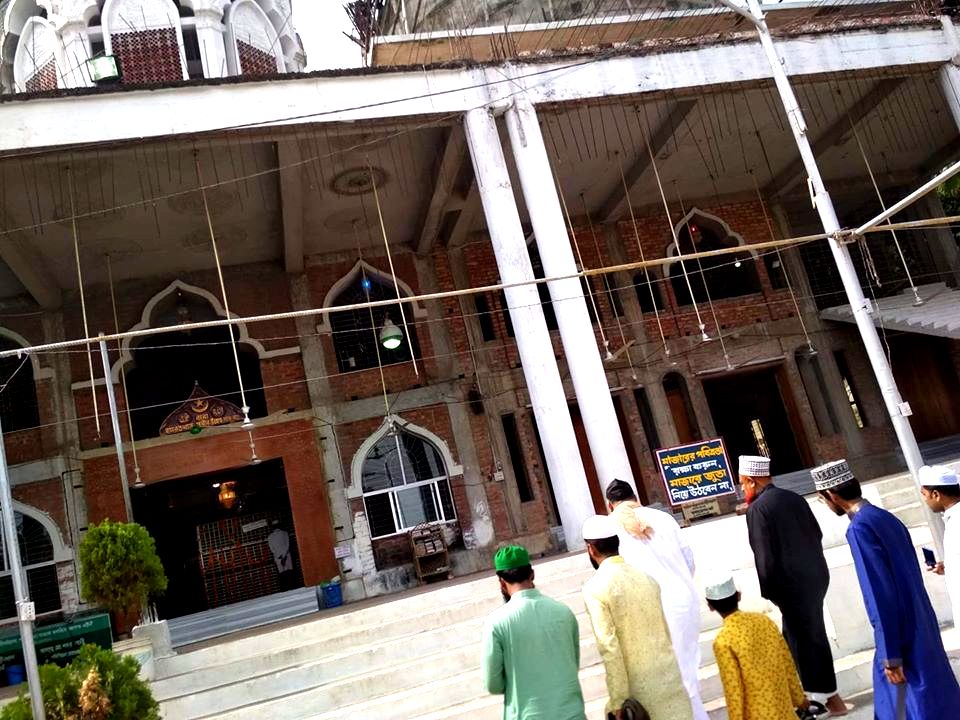
Of the three Qulij Khans, Qulij Khan Khwaja ‘Abid’ cannot be identified with Ruh Allah’s grandfather, because he received the title Qulij Khan in 1681, ie., 22 years after Prince Dara’s capture. It may, however, be argued that by the time the discourse was delivered, Khwaja ‘Abid’ had already got the title of Qulij Khan. But as his son Ghazi al-din Bahadur Firoz Jung played a prominent part in the Mughal empire in the early 18th century, his grandson could not be a young man in mid- 17th century. The identification of Qulij Khan Andjani is not impossible, though it seems rather unlikely that his grandson should have served as an ordinary attendant. The identification of Quiij Khan Turani seems more likely; according to the Ma’athir al-Umara he had no son, but Ruh Allah might have been a son of his daughter, because, according to the Ma’athir, his son-in-law received a mansab after his death. [ Nabira means both son’s son and daughter’s son). Anyway, the question cannot be definitely settled with the meagre information at our disposal.
The date of Shah Gharib Allah’s arrival at Chittagong is not known. The Malfuz-i-Rukni gives the impression that after renouncing the world in 1659, Ruh Allah (Shah Gharib Allah) passed some time with the saint Rukn al-din Shattari. Chittagong was brought under the Mughals by Shaista Khan in 1666. It is possible therefore that Shah Gharib Allah came to Chittagong sometime after 1666, though movement of saintly persons does not seem to have ever been restricted in the Muslim period. The discourse referring to Shah Gharib Allah is dated I1th August, 1693. Shah Gharib Allah must have died before this date because the discourse refers to his death as a past event.
Finally, there is the problem of locating his grave. According to the Malfuz-i-Rukni he is lying buried at Chittagong on the bank of the river Phani (Feni ). The Feni river is the dividing line between the districts of Chittagong and Noakhali. In the Mughal period also the Feni river was the western boundary line of Chittagong (Sarkar Islamabad). So far as we could gather, no saint of the name of Shah Gharib Allah is known to be lying buried on the bank of the river Feni. Shah Gharib Allah’s tomb is found near the river (about two miles from the bank of the river) Karnaphuli. It seems therefore that the Phani of the Malfuz-i-Rukni is a mistake for Karnaphuli, However, this problem also cannot be finally settled until fresh materials are available. It seems, however, very likely that Shah Gharib Allah of Malfuz-i-Rukni is the same as the saint of Chittagong bearing that name.
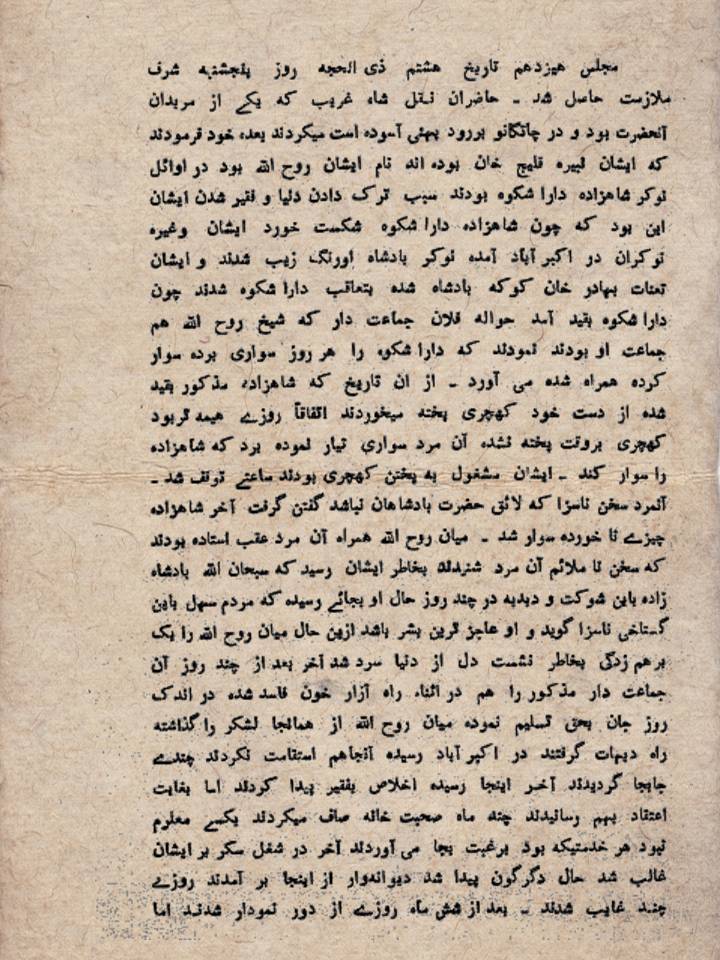
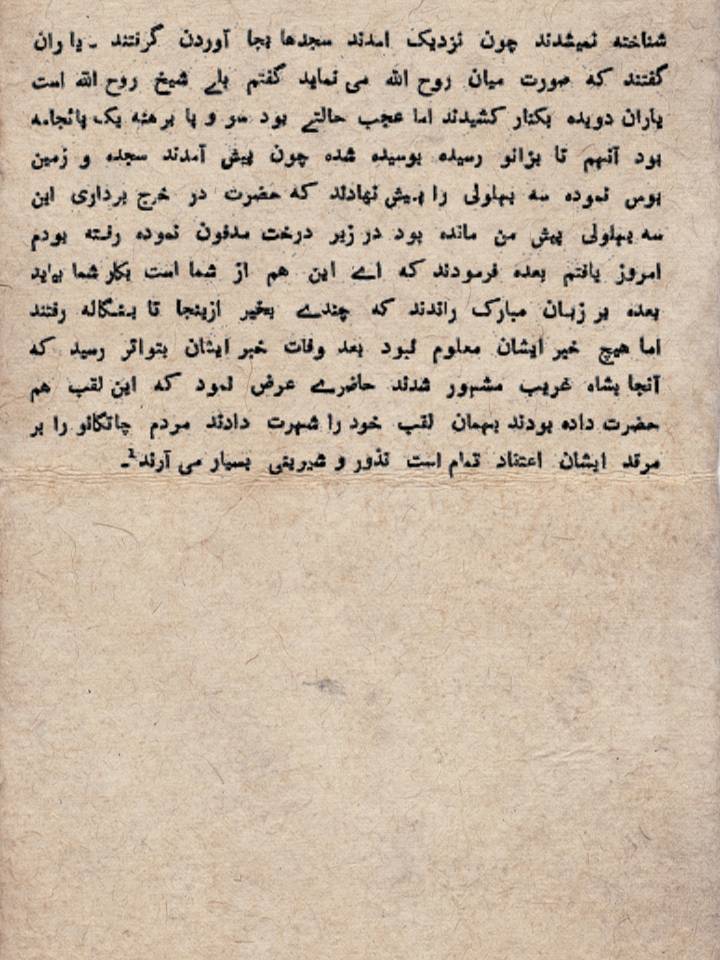
The Malfuz-i-Rukni clearly sa belonged to the Shattariya Sufi order. He came of a family of saints who also belonged to the same order. As Shah Gharib Allah Was a disciple of Shaikh Rukn al-din, it may safely be assumed that he (Shah Gharib Allah) also subscribed to the same discipline, i.e, the Shattariya order.
Note- This article was published in the Asiatic Society of Pakistan Journal in 1966. For our readers we are re publishing it with some edits on our blog.
Guest Authors
- Aatif Kazmi
- Absar Balkhi
- Afzal Muhammad Farooqui Safvi
- Ahmad Raza Ashrafi
- Ahmer Raza
- Akhlaque Ahan
- Arun Prakash Ray
- Balram Shukla
- Dr. Kabeeruddin Khan Warsi
- Faiz Ali Shah
- Farhat Ehsas
- Iltefat Amjadi
- Jabir Khan Warsi
- Junaid Ahmad Noor
- Kaleem Athar
- Khursheed Alam
- Mazhar Farid
- Meher Murshed
- Mustaquim Pervez
- Qurban Ali
- Raiyan Abulolai
- Rekha Pande
- Saabir Raza Rahbar Misbahi
- Shamim Tariq
- Sharid Ansari
- Shashi Tandon
- Sufinama Archive
- Syed Ali Nadeem Rezavi
- Syed Moin Alvi
- Syed Rizwanullah Wahidi
- Syed Shah Shamimuddin Ahmad Munemi
- Syed Shah Tariq Enayatullah Firdausi
- Umair Husami
- Yusuf Shahab
- Zafarullah Ansari
- Zunnoorain Alavi



